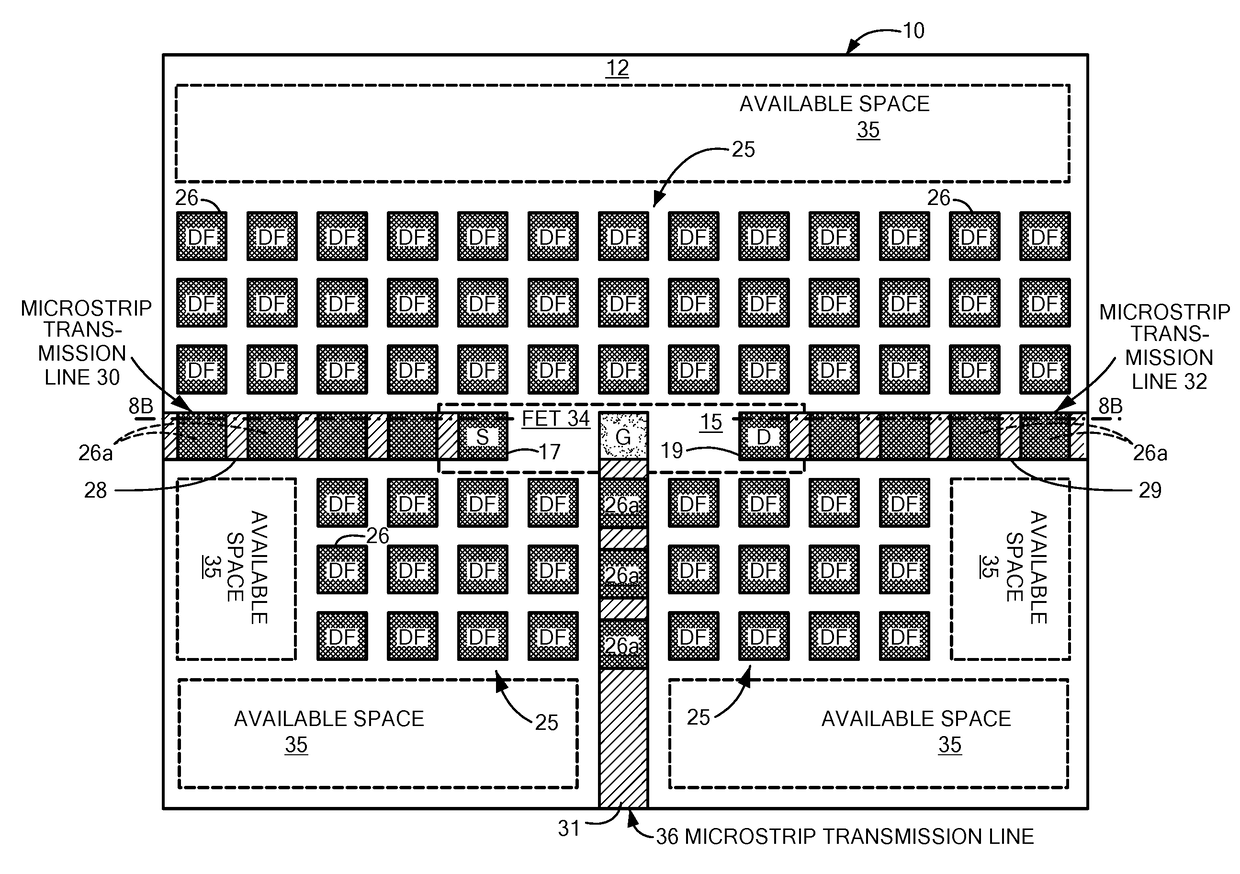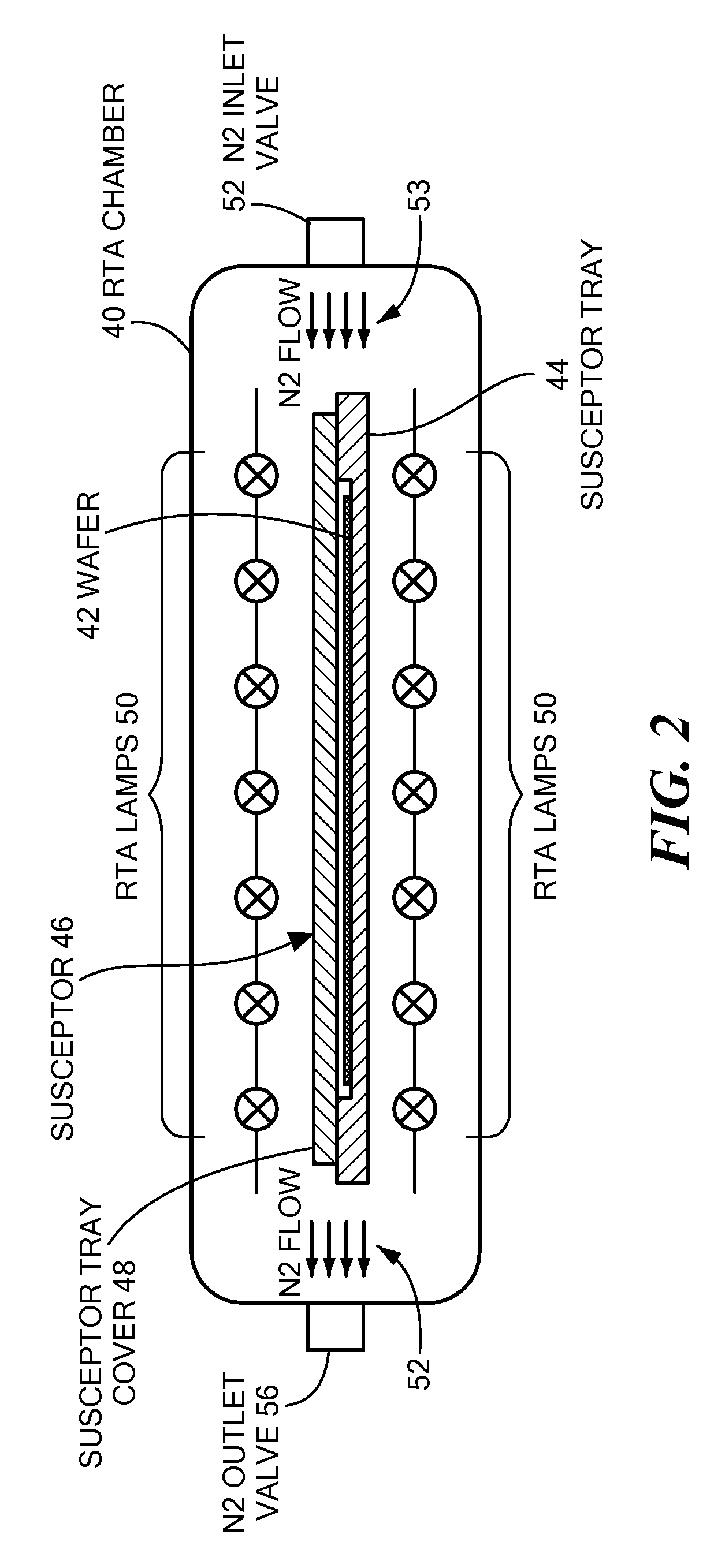Monolithic microwave integrated circuit (MMIC) and method for forming such mmic having rapid thermal annealing compensation elements
a microwave integrated circuit and compensation element technology, applied in the direction of electrical apparatus, semiconductor devices, semiconductor/solid-state device details, etc., can solve the problems of non-uniform heating profile, inability to meet the requirements of rta system incident infrared energy, and the wafer with respect to incident infrared energy can change significantly, so as to reduce the space required for isolation, increase attenuation, and reduce electrical coupling
- Summary
- Abstract
- Description
- Claims
- Application Information
AI Technical Summary
Benefits of technology
Problems solved by technology
Method used
Image
Examples
Embodiment Construction
[0030]Referring now to FIGS. 1A and 1B, a Monolithic Microwave Integrated Circuit structure 10 is shown. The structure 10 includes a substrate 12, here for example, silicon carbide (SiC) having an active device region 15, here, for example an aluminum gallium nitride (AlGaN) region on a portion of an upper surface 16 of the substrate 12. The structure 10 includes, on the substrate 12, a source (S) contact material 17 and a drain (D) contact material 19, here for example, a Ti / Al / Ni / Au stack (a bottom layer of titanium, a layer of aluminum of the layer of titanium, a layer of nickel on the layer of aluminum, and a top layer of gold on the layer of nickel) disposed on the active region 15, as indicated. The substrate 12 also includes a plurality of “dummy” fill elements 26′ (also indicated as DF'), here arranged, for example, in three arrays 25 outside of the active region 15, as shown. Here, for example, each one of the “dummy” fill elements 26′ is here a stack of Ti / Al (a bottom lay...
PUM
 Login to View More
Login to View More Abstract
Description
Claims
Application Information
 Login to View More
Login to View More - R&D
- Intellectual Property
- Life Sciences
- Materials
- Tech Scout
- Unparalleled Data Quality
- Higher Quality Content
- 60% Fewer Hallucinations
Browse by: Latest US Patents, China's latest patents, Technical Efficacy Thesaurus, Application Domain, Technology Topic, Popular Technical Reports.
© 2025 PatSnap. All rights reserved.Legal|Privacy policy|Modern Slavery Act Transparency Statement|Sitemap|About US| Contact US: help@patsnap.com



